


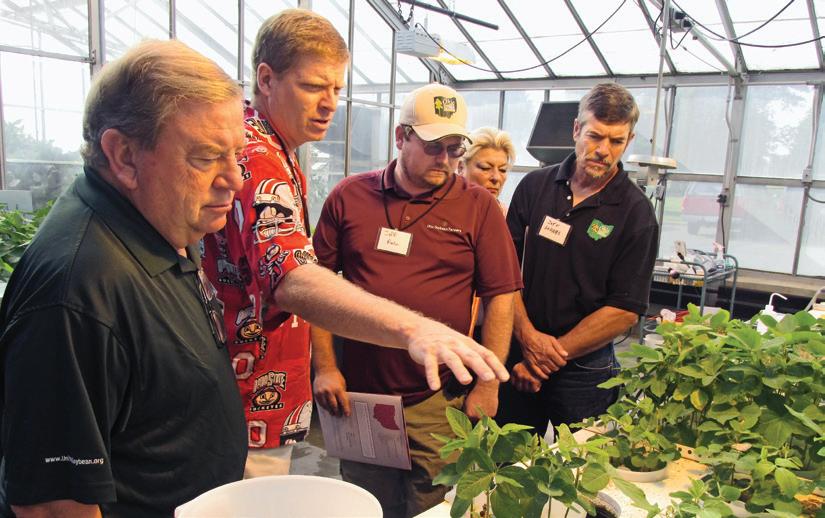





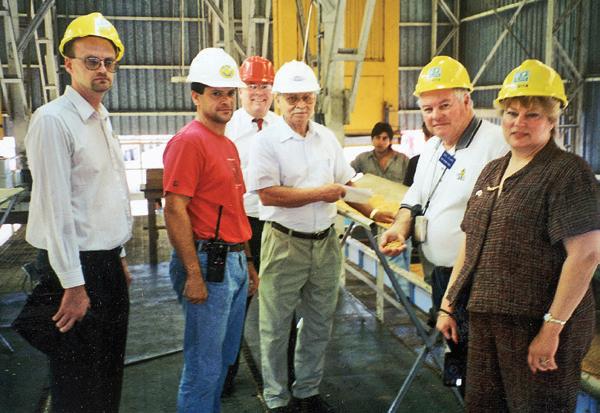


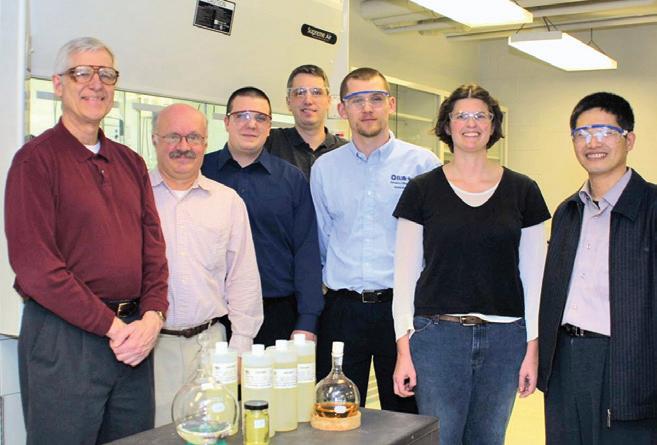




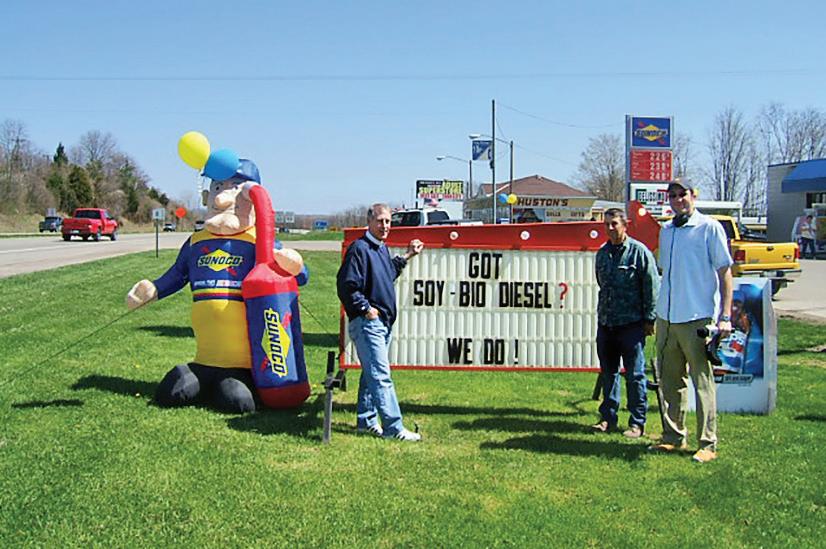

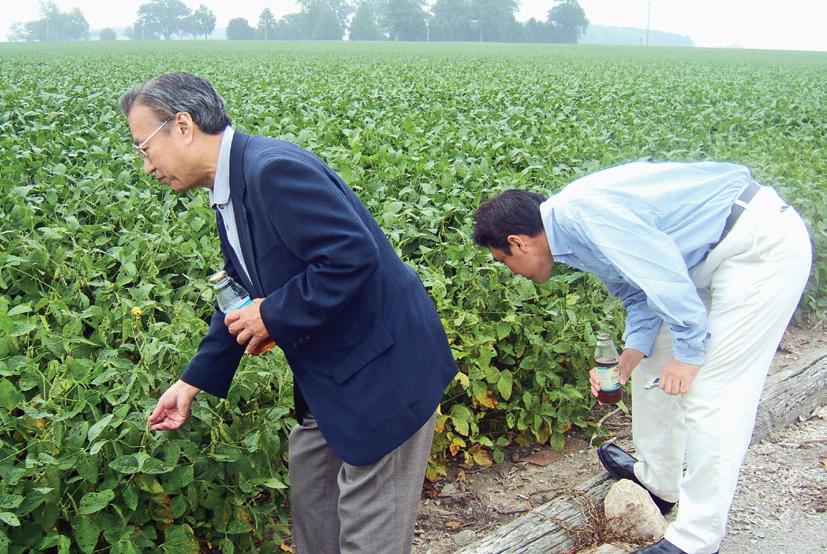



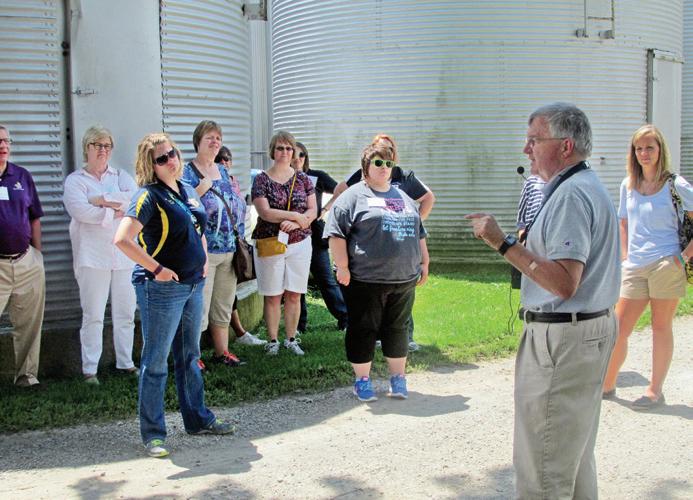


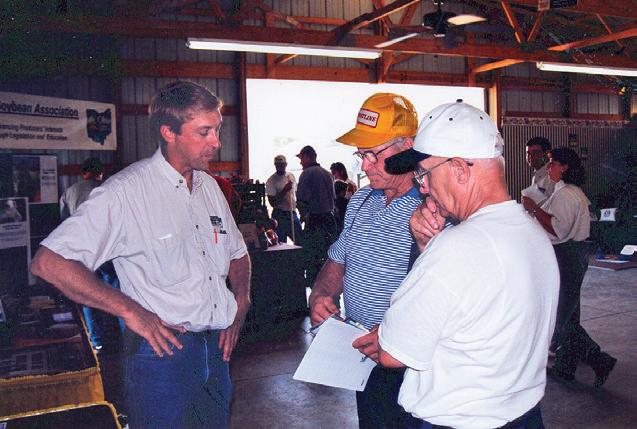



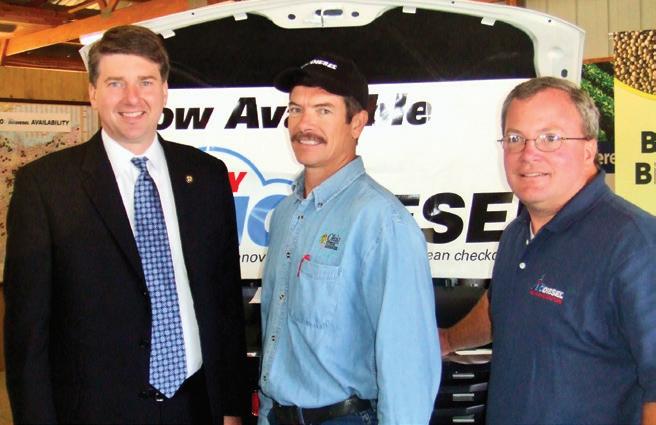


















































From researching new uses for soybeans to identifying new markets for U.S. soy, the soy checkoff is working behind the scenes to create new opportunities and increase profits for soybean farmers. We’re looking inside the bean, beyond the bushel and around the world to keep preference for U.S. soy strong. And it’s helping make a valuable impact for soybean farmers like you.
See more ways the soy checkoff is maximizing profit opportunities for soybean farmers at unitedsoybean.org
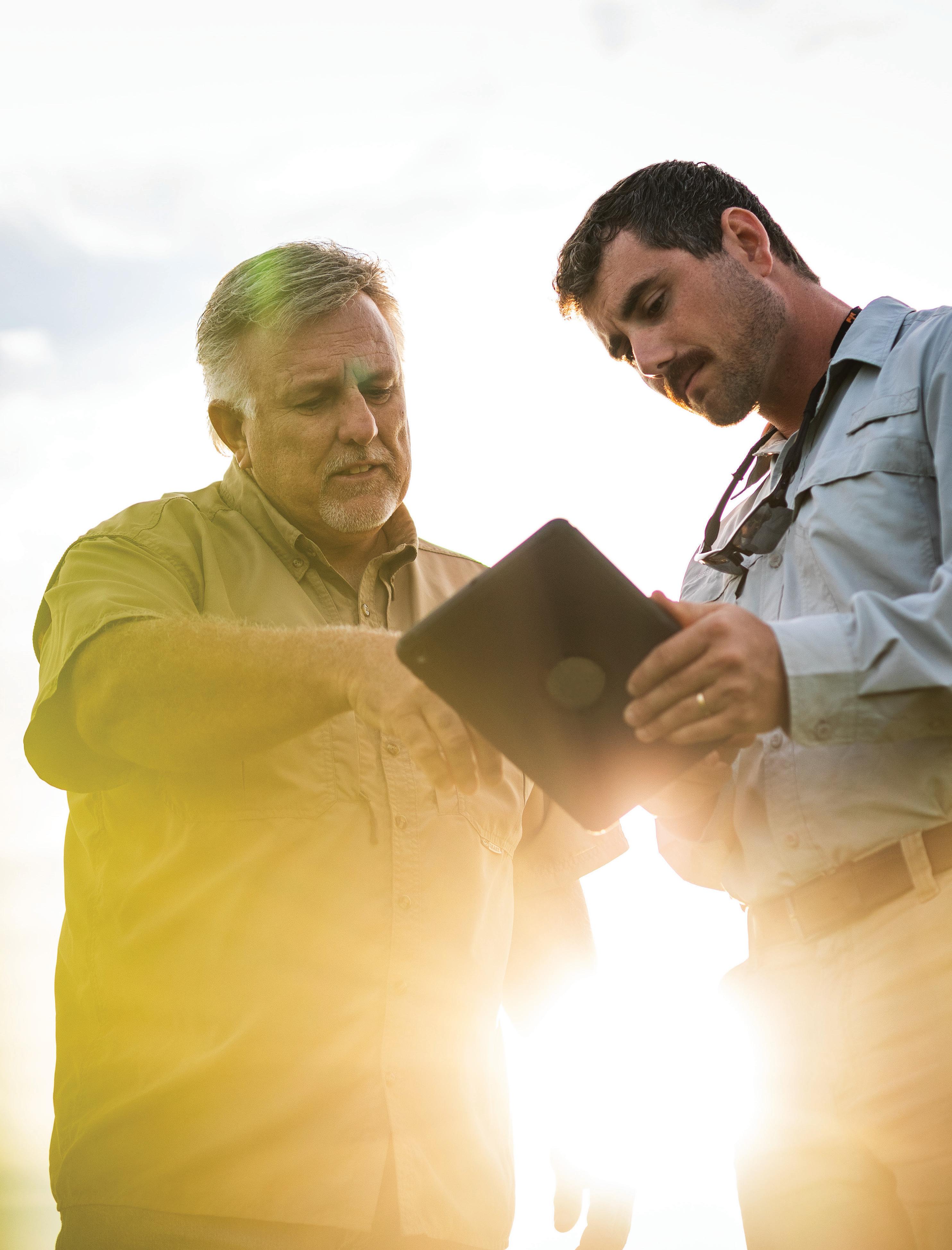



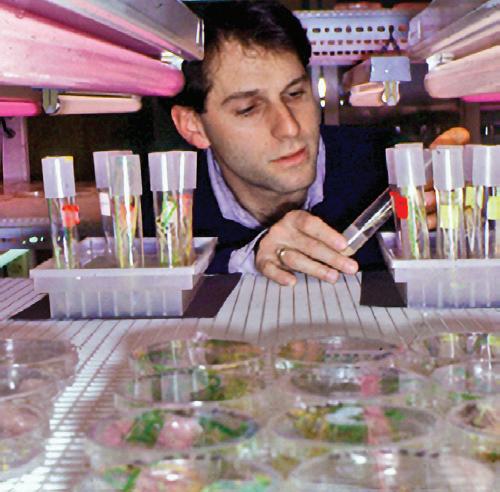



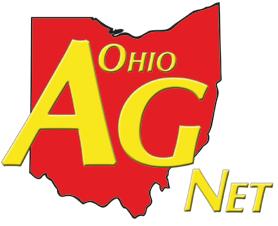
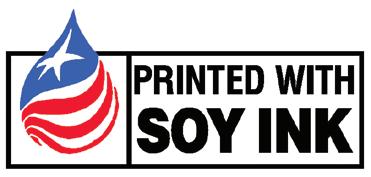
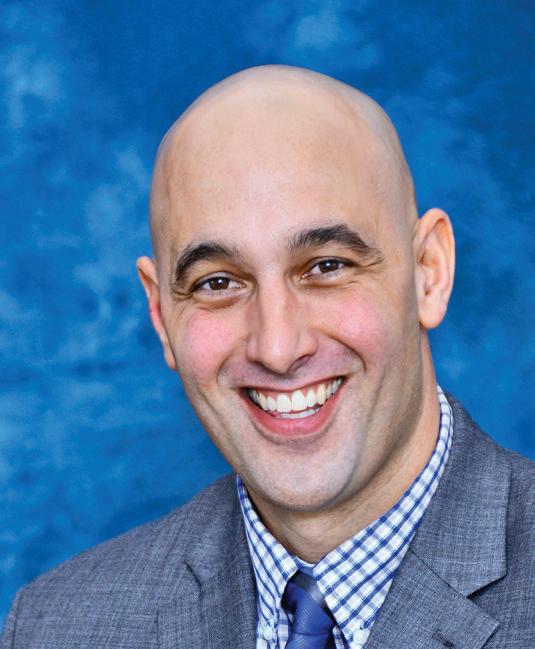
Ohio Soybean Association President Marion County soybean farmer
As I write this letter, Ohio farmers are gearing up for planting — we have picked out our seed and prepped our equipment. Soon the 2021 season will be underway and we will be scouting for pests, diseases and other stressors. While we keep an eye on our fields, the Ohio Soybean Association (OSA) will be keeping an eye on everything happening at the statehouse and Capitol Hill.
It’s been a busy start to spring for our organization. In just the last three weeks, OSA has submitted written testimony for six bills and there are more bills coming down the pipeline where our testimony may be necessary. Providing testimony is nothing new for our organization — we have been doing it for 55 years — but it is an important part of our involvement in the legislative process.
Lawmakers are not always aware of all the implications a bill might have for their constituents and submitting testimony helps us show lawmakers how legislation could impact soybean farmers and the communities in which they live and work. You can find our recent and past testimony on our website at soyohio.org.
If you are an Ohio Soybean Association member, you should receive a monthly Leader Letter e-newsletter, but a lot can happen between those monthly emails. If you are looking to get more frequent updates from us, I recommend checking out the Soybean Scoop, which goes live on our website every Friday morning (soyohio.org/soybeanscoop). Compiled by OSA staff, the Soybean Scoop will keep you informed of the latest happenings in Columbus and Washington, D.C., which is helpful during the busy summer months.
Wishing you a safe and successful planting season!
 Ryan Rhoades OSA President Marion County
Ryan Rhoades OSA President Marion County
President
Ryan Rhoades, Marion County
Vice President
Patrick Knou , Shelby County
Treasurer
Rusty Goebel, Williams County
Secretary
Jennifer Wilson-Oechsle, Van Wert County
Chairman
Scott Metzger, Ross County
Trustees
Jerry Bambauer, Auglaize County
Trish Cunningham, Union County
Bret Davis, Delaware County
Justin Esselburn, Holmes County
Caitlyn Heimerl, Industry A liate Ex-O cio
Je Magyar, Ashtabula County
Je McKanna, Hancock County
Derek Reusser, Holmes County
Andy Stickel, Wood County
Bob Suver, Clark County
Kerrick Wilson, Preble County
American Soybean Association
Board Representatives
Jerry Bambauer
Bret Davis
Scott Metzger
Staff Credits
Kirk Merritt - Publisher
Julia Brown - Editor
Brent Warren - Art Director
Barry Falkner - Photo Quality/Proofer
Ohio Soybean news is published six times a year by the Ohio Soybean Association, 918 Proprietors Rd., Suite A, Worthington, OH 43085. Phone: 614-476-3100. For address corrections contact Ohio Soybean News at 918 Proprietors Rd., Suite A, Worthington, OH 43085.
Web address: www.soyohio.org E-mail: cdeboard@soyohio.org
Comments and statewide news articles should be sent to the above address. Advertising space reservation must be made by the rst of the month preceding publication. In consideration of the acceptance of advertisement, the agency and the advertiser must, in respect of the contents of the advertisement, indemnify and save the publisher harmless against any expense arising from claims or actions against the publisher because of the publication of the content of the advertisement.
For Advertising Sales Contact:
Matt Herman - (612) 812-5833
matt.herman@dtn.com


Held March 2-5, the Commodity Classic Special Edition went virtual for the first time ever and offered three-and-one-half days of education, presentations from top agricultural experts and personalities, and networking between farmers and the companies with which they do business. The event attracted more than 6,000 attendees (4,500 of which were farmers) and featured an appearance from USDA Secretary Tom Vilsack.
As part of the annual event, the American Soybean Association considered the organization’s annual resolutions to set the tone and direction for policy advocating in the months ahead. Each year, the organization builds on existing resolutions by adapting where needed and adding new resolutions to address emerging priorities. Recommendations are funneled from state members into resolution subcommittees, which then hone the language that is finally voted on by delegates. The process is conducted in multiple stages to allow ample input, revisions, and improvements from ASA membership across the soy states and culminates in the final voting process. Ohio delegates were successful with the inclusion of resolutions on biobased products, carbon markets and water quality.
“We were happy to see several Ohio priorities make it into the final version of the 2021 resolutions,” said Ohio Soybean Association President Ryan Rhoades, who farms in Marion County. “As these resolutions influence policy advocacy over the next year, I know they will have a positive impact on Ohio farmers.” Many of Ohio’s priorities were reflected in U.S. Secretary of Agriculture Tom Vilsack’s keynote address at the general session. “We need to continue to focus on providing greater presence for U.S. products in markets,” Vilsack said. “That
means more people on the ground in those markets, more partnerships with institutions and universities to have a better understanding of what each market requires and more promotions to make sure the U.S. brand is well known and well received in markets.”
Among the approvals are resolutions supporting:
Trade Promotion Authority (TPA) reauthorization
A sufficiently-funded Commodity Credit Corporation (CCC) account to ensure timely benefits to farmers
A strong farm safety net and crop insurance program, including support for expanding double crop soybean coverage
Federal efforts to boost precision ag technology availability and grower adoption
Increased federal funding to provide conservation technical assistance to growers
USDA’s Natural Resource Conservation Service’s definition of soil health
Development of voluntary carbon markets that incentivize agricultural conservation
Significant increases in rural infrastructure funding
Changes to the traditional gas tax to reflect the increase in EVs/hybrids on the road to support the Federal Highway Trust Fund
Identifying additional funding mechanisms for rural broadband investment and deployment
Increased utilization of higher-blend biodiesel to lower emissions and improve air quality
Reducing barriers and increasing access to improved genetics and crop protection tools that lead to improved environmental outcomes
Delegates from Ohio were:
Jerry Bambauer (Auglaize County), Trish Cunningham (Union County), Bret Davis (Delaware County), Rusty Goebel (Williams County), Caitlyn Heimerl (Delaware County), Patrick Knouff (Shelby County), Jeff Magyar (Ashtabula County), Scott Metzger (Ross County), Ryan Rhoades (Marion County), Bob Suver (Clark County), Kerrick Wilson (Preble County), and Jennifer Wilson-Oechsle (Van Wert County).
The next Commodity Classic is set for March 10-12, 2022 in New Orleans.





House Bill 63 (Cutrona, Stoltzfus)
Eminent Domain
Makes changes to Eminent Domain Laws in Ohio and provides landowners additional ways to appeal possible eminent domain decisions.
What We Say: “We support this bill largely because of the positive impact it will have on protecting property owners' personal rights. This bill would protect the needs of property owners while still acknowledging the public benefit. While eminent domain can be a useful tool, property owners should be able to have a say in the process and work with their local elected officials for the public benefit.” – OSA President Ryan Rhoades
House Bill 95 (Manchester, Lightbody)
Tax Credit
Provides an income tax credit for beginning farmers who attend a financial management program, and an income tax credit for individuals or businesses that sell or rent farmland, livestock, buildings, or equipment to beginning farmers.
What We Say: “This bill helps beginning farmers build equity, while also incentivizing landlords and/or farmers to lease or sell their property to new farmers. This could work well for farm families, as an aging generation looking to retire from their career can pass it on to someone to continue the legacy. In the end, farmers are caretakers from one generation to the next. We never really own anything.”
–Trish Cunningham, OSA Board
House Bill 110 (Oelslager)
State Budget
The biennial state operating appropriations bill that includes funding for the H2Ohio program.
What We Say: “We thank Governor DeWine and the General Assembly for
continuing to prioritize water quality. So far, the H2Ohio program has been successful in promoting the best practices for nutrient management on over a million acres of farmland and we look forward to building on that success in the coming years.”

Senate Bill 52 (Reineke, McColley)
House Bill 118 (Riedel, Stein)
– Kirk Merritt, OSA Executive Director
House Bill 144 (Kelly/Hall)
Senate Bill 71 (Lang, Thomas) Fuel Quality
Allows Ohio counties to create fuel quality standards programs.
What We Say: “Confidence in transportation is key to successful farming and agriculture in Ohio. There are very few factors of farming that can be controlled. One of these is the fuel put into vehicles and equipment. Bad fuel is extremely hard on equipment and damages to machinery creates an unnecessary cost to farmers.” - Patrick Knouff, OSA Vice President
Senate Bill 128 (Peterson)
House Bill 239 (Creech)
Farm Management
Expands content and specifications for The Ohio State University’s Farm Financial Management Institute and also provides an appropriation.
What We Say: “As producers, the tools of agriculture marketing, finance, production, risk management, and human resources can help us make current and future decisions that will strengthen our operations now and for years to come.”
– OSA President Ryan Rhoades
Wind Farms
Requires inclusion of safety specifications in wind farm certificate applications and modifies wind turbine setbacks. It also creates a referendum process that would allow townships to approve or reject wind or solar projects that have already been approved by the Ohio Power Siting Board.
What We Say: “Our concern with this bill centers on the potential for other local referendum processes that go beyond wind and solar projects to establish additional burdensome rules and regulations on agricultural practices that are already highly regulated.”
–Emilie Regula Hancock, OSA Policy & Membership Manager
House Bill 165 (McClain)
Ethanol Fuel
Authorizes a nonrefundable tax credit for the retail sale of high-ethanol blend motor fuel.
What We Say: “Ohio’s farmers are dedicated to being environmental stewards and are committed to clean air through the use and promotion of renewable fuels ethanol and biodiesel. This bill will allow more consumers to purchase cleaner burning fuel and contribute to healthier air quality.”
–Ryan Rhoades, OSA President u


From promoting the profitability of using high-quality soybean meal in India to training animal producers on nutrition in Colombia, the soy checkoff is working behind the scenes to develop more market opportunities for U.S. soy. We’re looking inside the bean, beyond the bushel and around the world to keep preference for U.S. soy strong. And it’s helping make a valuable impact for soybean farmers like you.




See more ways the soy checkoff is maximizing profit opportunities for soybean farmers at unitedsoybean.org


Interested in participating in the Young Leader program or want to see previous classes? Visit soygrowers.org and click on the Education & Resources tab.
Another new class of emerging leaders are honing their skills to serve as the voices for U.S. agriculture through the American Soybean Association (ASA) and Corteva Agriscience™ Young Leaders program.
The 38th class of Young Leaders met virtually March 11, 2021, and will continue their training with two in-person sessions later in 2021.
ASA’s longest-running leadership program, Young Leaders was founded in 1984 and continues to set the bar for leadership training in agriculture, identifying and training new, innovative and engaged growers.
During the virtual meeting, Young Leaders had the opportunity to connect with one another, discuss the upcoming in-person training programs and hear from soybean industry leaders. Also joining the meeting were, ASA President Kevin Scott (SD); Mike Dillon, Global Portfolio Leader – Soybeans, Corteva Agriscience; Matt Rekeweg, U.S. Industry Relations, Corteva Agriscience, Peter Laudeman, Political Affairs Manager, Corteva Agriscience and Jordan Scott, South Dakota Soybean Association President and member of the Young Leader class of 2018.
“The Young Leader program provides participants with the tools and knowledge they need to be successful leaders while helping them build confidence and grow a strong
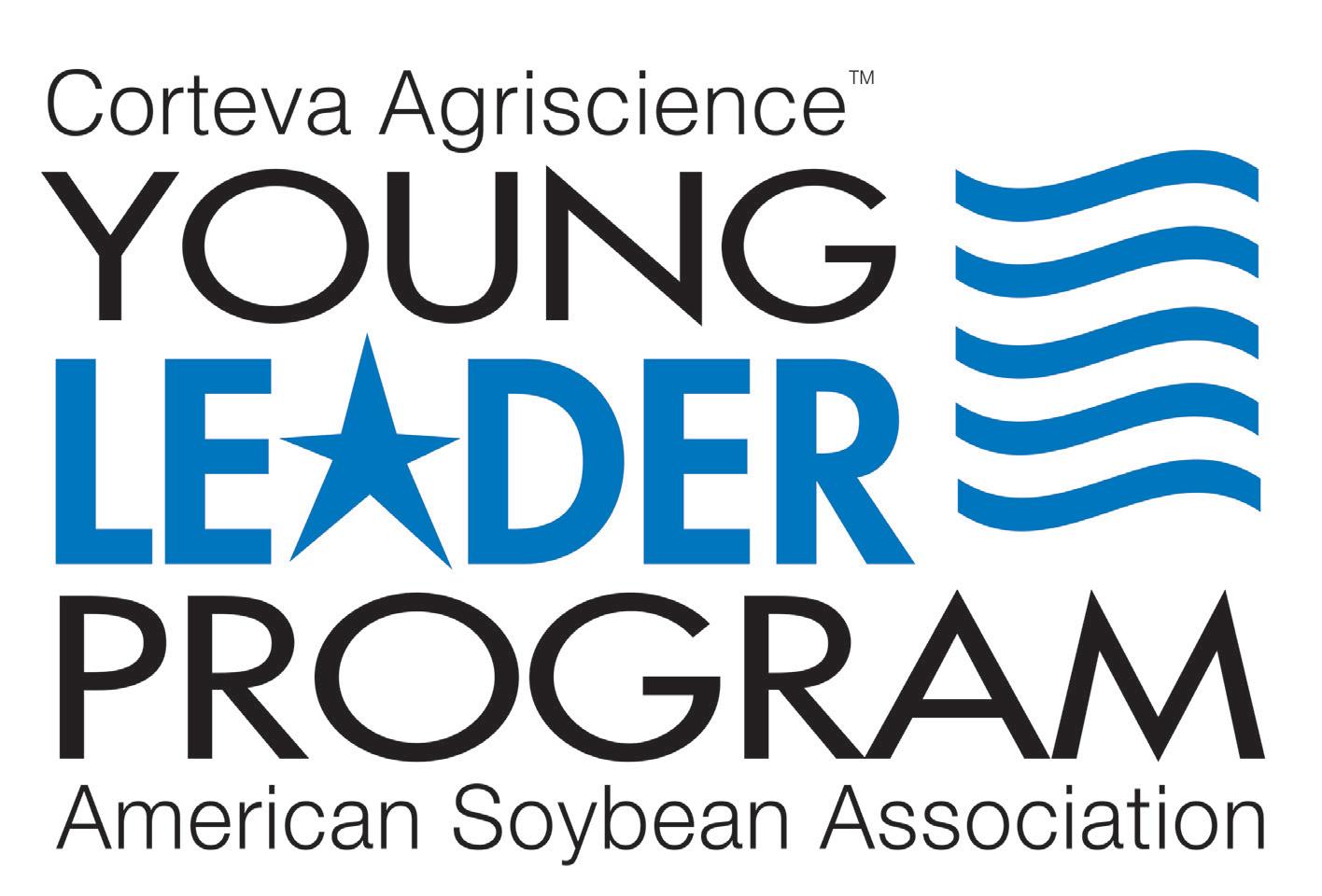
support network,” ASA President Kevin Scott said. “I’ve seen firsthand the impact it can have. My son Jordan and daughter-in-law Samantha’s experience in the program encouraged them to get involved and I couldn’t be prouder to say that Jordan is now serving as president of the South Dakota Soybean Association.”
“For nearly 40 years, the Corteva Agriscience Young Leader program has worked to identify, develop and support leaders in the U.S. soybean industry. We are honored that our long-term collaboration with ASA means these growers will sharpen their talents and develop skills to help America’s soybean farmers and the agriculture industry,” said Mike Dillon, Global Soybean Portfolio Leader, Corteva Agriscience. “The 2021 Young Leader class is an outstanding group and I am optimistic they will contribute to the soybean industry’s bright future.” u
THE 2021 YOUNG LEADERS ARE: Wes & Vonda Kirkpatrick (AR); Joey Stasell (IL); Jake McCormick & Sarah Luecke (IN); Jeff & Kim Failor (IA); Kendall & Austin Heiniger (KS); Collin Cooper & Allison Dallas (KY); PJ Feldpausch (MI); Evan & Lucy Staley (MD); Kelli & Jeff Sorenson (MN); Reid Carter (MS); Kaitlin Flick & Klinton Holliday (MO); Cale Buhr (NE); Logan & Kristin Watson (NC); Andrew & Brittni Cossette (ND); Bennett & Liza Musselman (OH); Alex & Grace Tolson (SC); Taylor & John Elverson (SD); and Jason & Brandy Cherry (TN).








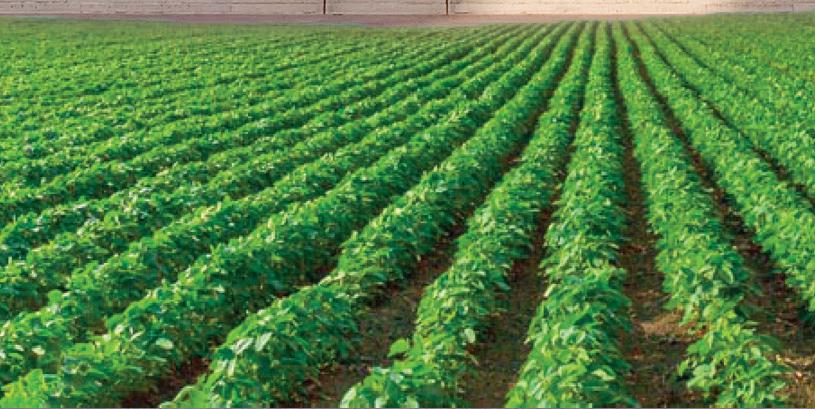

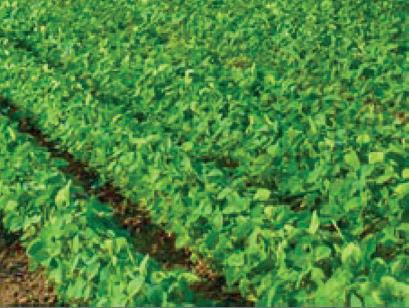




Women in agriculture find they are not only increasingly advocates for their industry, but they also face less adversity than in the past being female in a male-dominated field. Women realize as their numbers increase and roles diversify, they contribute to agriculture in myriad ways. And that includes women who work directly in soybean production and those in related careers.
Women Make Inroads Into Traditional Farm Roles
Sixty years ago, farm wives could be found almost exclusively in the kitchen, raising children and preparing meals for hired hands. But the role of farm women has been slowly evolving, and more women are found doing the same daily tasks today as their male counterparts.
The U.S. Ag Census reports 1.2 million women in 2017 accounted for 36% of total farmers. More than half of all farms, 56%, had a female producer. Women farmers are slightly younger at an average 57.7 years old, more likely to be beginning farmers and live on the farm they operate versus male farmers. They also have increasing influence. Female producers are most involved in day-to-day decisions, recordkeeping and financial management.
Female-operated farms sold $148 billion in agricultural products in 2017, with 49% in crop sales and 51% in livestock and livestock product sales. Female-operated farms represented 38% of U.S. ag sales and 43% of U.S. farmland — up 27% and 23% respectively from 2012. Women were responsible for the management of 388 million U.S. acres.
Trish Cunningham Levering is one of those female farmers. She produces corn and soybeans near Prospect, Ohio, while sharing equipment with her parents who farm nearby.
“I grew up on a diversified farm with crops, hogs and cattle. I am fortunate as an only child to have always been my dad’s right-hand person,” she says. “I watched my mom and aunt drive combines when I was little, and I was always treated as an equal when I started buying and selling inputs and crops and servicing equipment. My involvement was viewed as normal.”
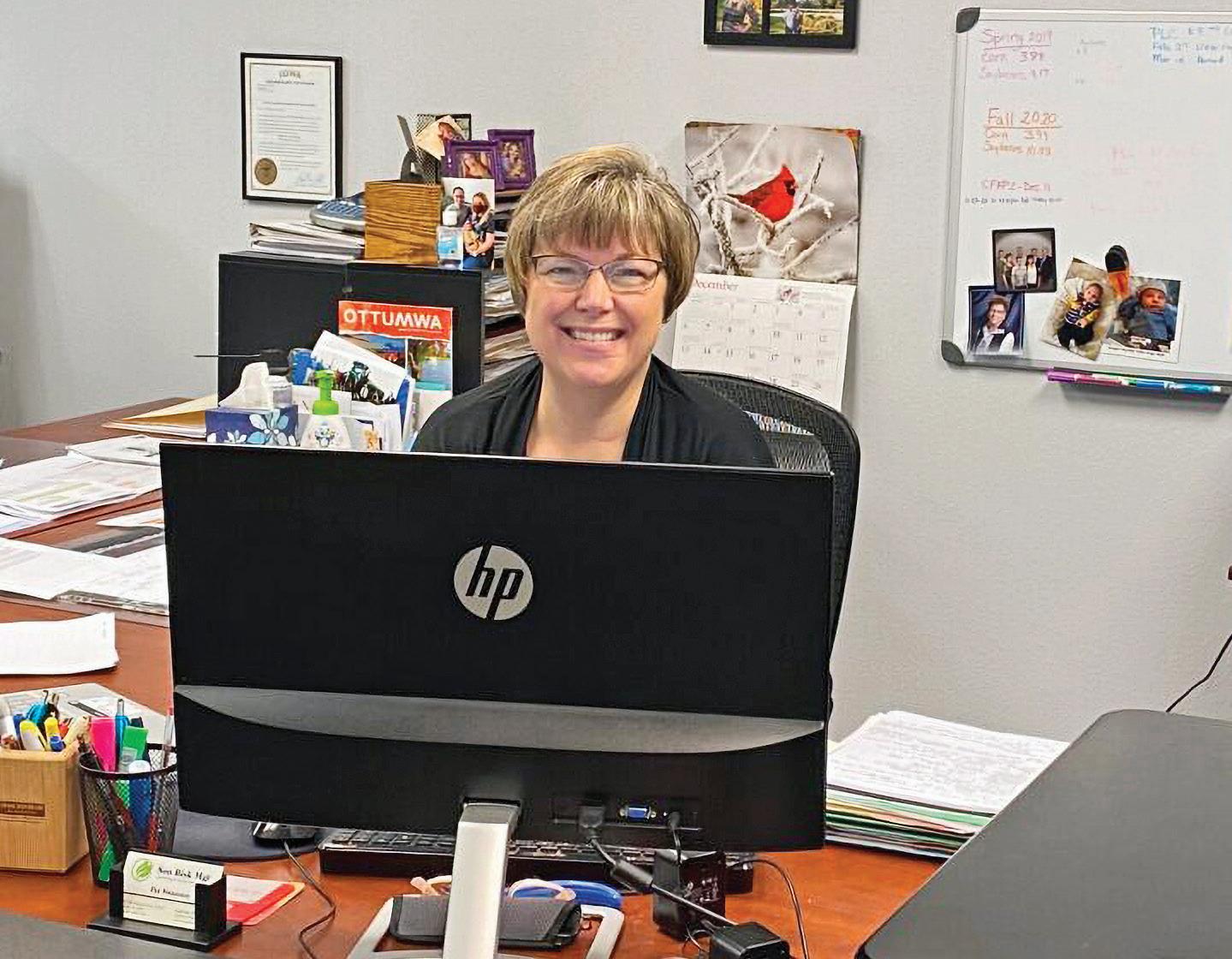
On her family farm in Ottumwa in southeast Iowa, Pat Swanson does bookkeeping, provides marketing input and helps around the farm.
After studying animal science and ag economics at Oklahoma State University, she returned to Ohio. She worked as a seed salesperson before deciding to farm full-time.
“I have a six-year-old daughter, Blair. She asks questions and wants to know all things about the farm. She used to ride along on my seed sales calls, too,” says Levering. “My message is that if she sees me do it, it must be normal. Hopefully, the next generation will have less reason to question who is a farmer. In some ways, it is more difficult to be a young farmer than female.”
In addition to farming, Levering serves as chair for the Ohio Farm Service Agency State Committee, a historically male role. She has led operations for the five-person board since 2018 and is an at-large young leader for the Ohio Soybean Association, as well.
Her Advice: “Never stop learning,” Levering says. “Work to have a seat at the table if that is what you want. It’s ok to have a hands-on role in farming. You must expect the same opportunities as men and not be intimidated by others. Be comfortable with yourself.”
Pat Swanson farms near Ottumwa in southeast Iowa with her husband, Don, Don’s brother, and both of their families. And while she doesn’t have the direct responsibilities of crop or beef production, she is an active partner on farm management decisions for the operation.
“I do the bookkeeping and provide marketing input,” says Swanson. “It is vital for our farm to have family goals and be on the same page to succeed. For us, that means my role is primarily in the financial decisions, but I move equipment and hold gates, too.”
Swanson grew up on a farm in northern Iowa and began weekend farming with her husband more than 30 years ago. They eventually gave up full-time jobs and began raising corn and soybeans and managing their cow-calf and feedlot enterprises.
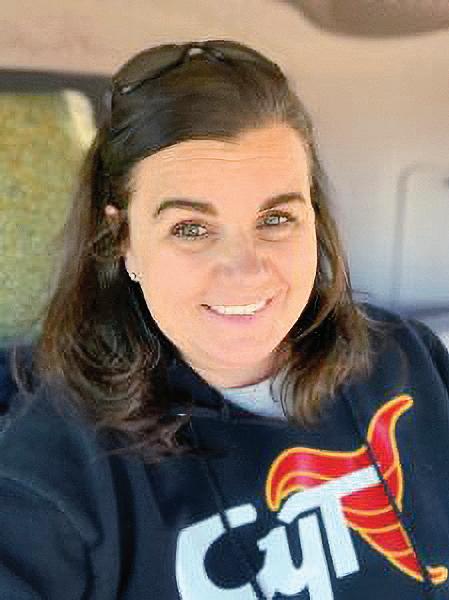
They also started Son Risk Management, a crop insurance agency, which has been mostly her day-to-day responsibility.
“We have a full-time office manager for the crop
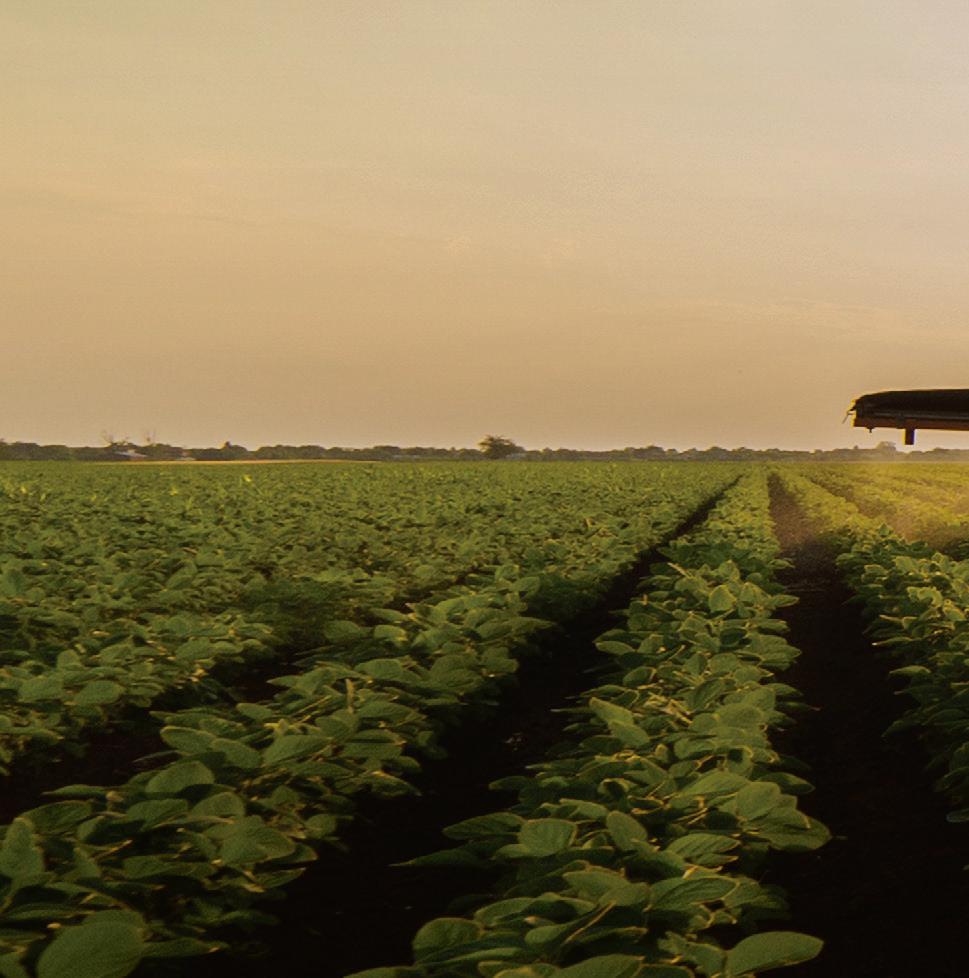
insurance agency now, so that gives me some flexibility to be more involved in the farming operation and as an active advocate for the ag industry,” she says. “Since we use conservation practices like no-till, cover crops, terraces, buffer strips and waterways, I work on how we can capitalize these improvements and secure cost-share opportunities with the soil and water conservation district.”
Swanson also is passionate about telling their farm story to consumers and legislators. She began as an ag advocate with Ag in the Classroom and CommonGround and later became a district director for the Iowa Soybean Association and member of the ASA Agriculture Communications Team. She serves on the Wapello County 4-H Foundation and the Iowa Farm Service Agency State Committee. Most recently, she was named to the Federal Crop Insurance Corporation (FCIC) board.
“Ten years ago, it was eye opening to be one of the only women in the room at a farm meeting. That is slowly changing,” she says. “My son Jake is the Iowa governor’s ag policy adviser and still helps on the farm. My daughter Erica works in college student affairs with an eye on a possible return to the farm. I didn’t think that would happen, but it warms my heart that it may.”
Her Advice: “Prove you know the issues. Educate yourself. Read and ask questions,” Swanson says. “Talk to other women in ag and find a mentor that can help you. And above all else, be successful not because you are female but because you want to be successful.” u



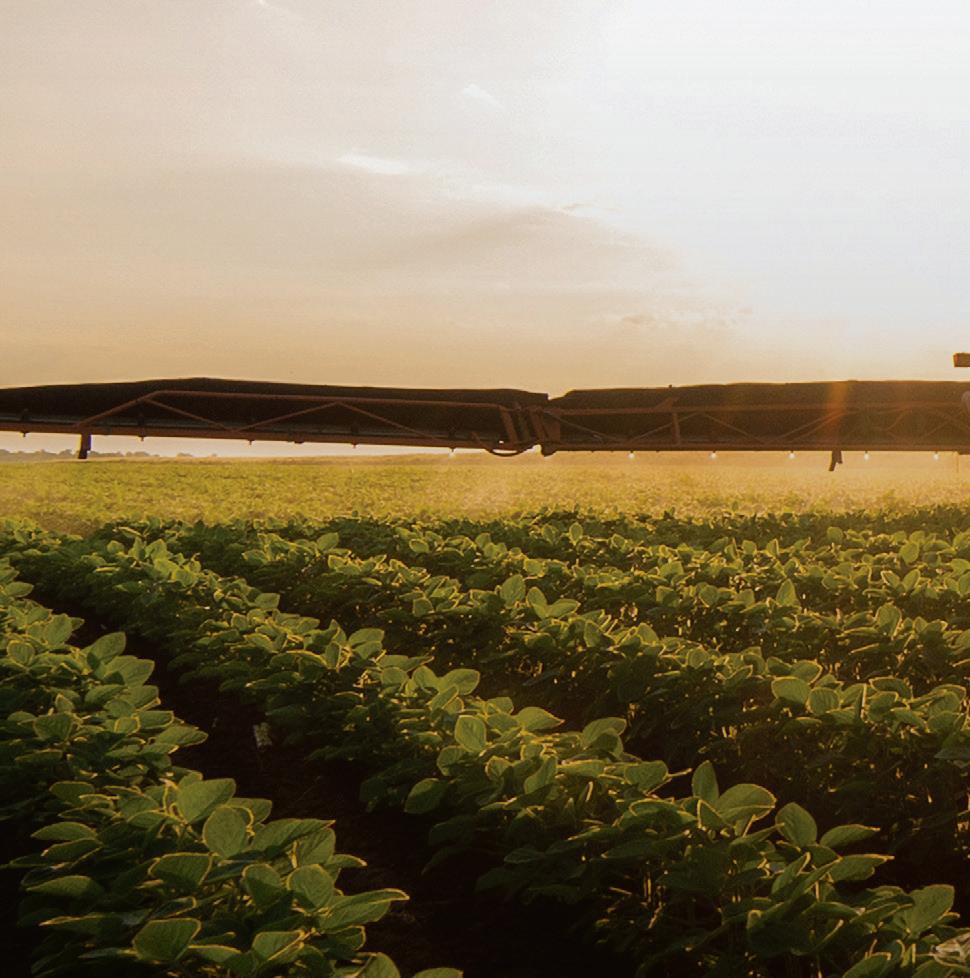







The following information provides a snapshot for crop producers of the carbon market landscape as of April 2021. Most of the current opportunities are for pilot projects and are not operating fully as a market at this point. Payment amounts vary and can be practice-based (with a fixed amount paid for adoption of certain conservation practices) or outcome-based (providing either a guaranteed amount per acre, or an amount based on the quantity of carbon sequestered as estimated through models or measured in soil tests). The information below should help when considering options but will change as the markets evolve. Keep in mind the sector is in its infancy. The companies in the marketplace range from large, well-known input suppliers to start-ups. Once you sell carbon credit through one of the companies, you are often making a long-term commitment with that company. Due to the general exclusiveness, new practice requirements, and carbon market rules to ensure offsets are not counted more than once, the enrolled acres will likely be ineligible to participate elsewhere at this point, even if the original company is no longer in the carbon marketplace.
If you are thinking about enrolling in one of the carbon
and verified. Typically fall of following year. Compensation is through Bayer PLUS Rewards account and can be redeemed for cash.
Minimum acreage required Fields must be at least 10 acres
Locations currently offered IN, IL, IA, KS, WI, ND, SD, NE, MN, MO, MI, OH, AR, MS, LA, MD, DE
Data requirements
carbon losses and administrative fees.
Sometime after next harvest
None in pilot phase. To be determined for market launch.250 acres
U.S. regions of Corn and Soy Belt, Great Plains, Great Lakes, Pacific NW, CA, others TBD. Market launch will be national. United States
Use Climate Fieldvew (do not have to purchase Bayer products) to enter data. Producers input practices which are verified by satellite.
Contact info, field boundaries, field management info and soil sampling information
Farmers share practice information with Gradable. Three years minimum of historical data are needed. FBN uses machine learning to distill to a single score.
Program start date Fall 2020 2022 full launch Currently soft launch September 2020
Data ownership
Can early adopters participate?
Must land be owned
Bayer does not share your data with third parties except in confidence for the purposes listed by the agreement (https://www.cropscience.bayer.us/ privacy-statement).
Producers own and have full access to their data which can be imported from other platforms. Data not shared with 3rd parties without producer permission.
Does not sell personal data. Privacy details can be found here https://www.gradable.com/privacy-policy. FBN is certified Ag Data Transparent.
based based on validated
Fields with practices started before 2012 are ineligible. If practices were adopted between 2012 and 2020, field is eligible for 2021 carbon program and up to 5 years of historical payments. If practices started in 2021, eligible for carbon program only.
No, but the producer must have necessary permissions from the landowner to participate.
Bayer pays for validation and verification costs.
Who pays for monitoring?
Contract length Program runs 10 years. Practices must be maintained for 10 years beyond that.
Working on opportunities
No, but need to rights to have assets generated
Practices must have been adopted within the last two years to be eligible.
can be owned or rented
Pilot project partners incur cost of soil sampling during pilot phase.15% of credits are retained by Gradable to cover costs
Pilot is annual. Market launch wll be 10 years and can be renewed once.
Program runs 5 years. Practices must be maintained another 5 beyond that.
Notes
Credits for soil carbon, net GHG, water quality and water conservation. Producers responsible for implementation costs and potential program expenses.
Practices that earn credits include no-till or reduced tillage, cover crops, diversifying crop rotation and reducing nitrogen use. Gradable can also offer farmlevel sustainability score for premium markets.
Website bayercarbon.com ecosystemservicesmarket.org www.gradable.com/carbon
marketplaces, consider the timing. If carbon offsets really take off in the future, the credits could be much more valuable at a later date. On the flip side, the landscape could change in a way that makes the credits in a voluntary offset market worthless. Some of the companies listed below purchase the credit immediately,
while others allow you to hold it and sell it at a later date while also offering a floor price. The latter option allows you to participate now and potentially benefit if the markets take off. However, the credit is only good in the future if there are buyers and the company backing the credit is still around.
In short, there is quite a bit of uncertainty around voluntary carbon offset markets at this point. The information below should help when considering options but will change as the markets evolve. If you have questions, feel free to contact ASA or Ohio Soybean staff. u
Payment amount and basis
When is payment made
Minimum acreage required
Locations currently offered
Data requirements
Program start date
$10 per ton floor for 2020 on first carbon crop. Potential price of $15.$20 per ton
After results verified and Indigo sells credit, payments are made in 5 installments over 5 years (50% in year 1, 20% in year 2, and 10% in years 3, 4, and 5). Second half of 2021
Currently, $15 per credit fully payable to the farmer plus one unit of cryptocurrency called a NORI token in a restricted account for ten years. The token can be sold back to NORI and has a floor price. Up to $40 per acre per year
As NRT's are sold, suppliers are paid monthly. Nori currently uses first in/first out so the oldest projects are listed first. 50% at time of signing and 50% after verification 150 acres None
Recommended 1,000 or more acres during pilot stage, but smaller farms may aggregate None
AR, CO, GA, IL, IN, IA, KS, KY, LA, MN, MS, MO, NE, NC, ND, OH, OK, SC, SD, TN and TX AR, IA, IL, IN, KS, KY, LA, MD, MI, MN,
Must use software platform to map field boundaries and submit field management information. Historical data for the past 3 to 5 years must also be added.
Historial data must be provided, including three years prior to regenerative practice adoption. Annual data must also be reported.
Must enter field boundaries, agronomic practices and production information. Must be verified by Nori-approved third party.
Particular counties in Iowa, Illinois and Ohio for 2021
Must report 2 to 3 years of baseline operational data plus 2 to 3 years of
Data ownership


Animal agriculture is the largest consumer of U.S. soybeans, and a robust, expanding pork industry is critical to soybean producers' bottom line. For many years, the Ohio Soybean Council has helped fuel pork export growth by investing in international marketing programs conducted by the U.S. Meat Export Federation (USMEF). In 2020, U.S. pork and pork variety meat exports shattered previous records by reaching nearly 3 million metric tons (mt) valued at more than $7.7 billion. In fact, exports accounted for 29% of total U.S. pork production in 2020 and equated to nearly $59 per head slaughtered.
Ohio soybean producers have traditionally targeted their support toward USMEF's retail promotions of U.S. pork, especially in the highvalue market of Japan. With COVID restrictions imposed on foodservice operations in 2020, limiting Japanese consumers’ ability to dine out, retail demand for U.S. pork was especially strong — including fresh pork, processed products using U.S. raw materials and branded items processed in the U.S. With in-store tastings largely suspended and limited opportunities for face-to-face marketing, USMEF turned to social media and other creative methods of consumer outreach to keep U.S. pork top-of-mind for retail shoppers in Japan.
“Japan is a rather unique market in that consumers are very accessible and open to online marketing, but still have a strong preference for making final selections in person,” explained Dan Halstrom, USMEF president and CEO. “In some other Asian markets, e-commerce is more widely used for purchasing, while Japanese consumers are more inclined

to research products online but do their buying at the meat counter.”
Halstrom noted retail shoppers also place a heavy emphasis on quality, which is why U.S. pork has achieved such great success in the Japanese retail sector.
“While COVID certainly created new challenges, the fundamentals that attract Japanese consumers to U.S. pork and maintains their loyalty haven't changed,” he said.
Strong retail demand helped the U.S. pork industry capitalize on tariff relief provided in the U.S.-Japan Trade Agreement, which entered into force at the beginning of 2020 and leveled the playing field between the U.S. and its primary competitors in Japan — Canada and the European Union. Exports to Japan finished the year 5% higher year-over-year at 386,700 mt, with value up 6% to $1.63 billion. U.S. market share rebounded to 36% of Japan’s total pork imports, up from 31% in 2019.
“I've said many times that our new trade agreement with Japan is the biggest trade policy win for U.S. red meat in many years, and one of the biggest ever,” Halstrom said. “But market access alone doesn’t sell product — you still need effective marketing. That's why soybean producers' support of U.S. pork in Japan is so important, and very much appreciated.”
Japan is just one example of USMEF's effort to expand the retail presence of U.S. pork throughout the world — whether in modern supermarket meat cases, traditional wet markets or e-commerce platforms. Ongoing struggles with African swine fever (ASF) have opened new retail opportunities in China, where U.S. exports were record-large in 2020, as well as in Hong Kong. ASF was also a factor as U.S. pork exports reached new heights in Southeast
Asia — especially in Vietnam and the Philippines. While exports to South Korea trended lower in 2020 due to a surge in domestic production, prospects for growth in Korea remain high. In recent years U.S. pork has capitalized on Korean consumers' growing appetite for home meal replacement items and high-protein snack foods, bolstered by duty-free access through the Korea-U.S. Free Trade Agreement.
Western Hemisphere markets also play a key role in expanding U.S. pork's global retail presence. Demand slumped in key destinations such as Mexico and Colombia in 2020, as the COVID pandemic and weakened currencies impacted consumer buying power. But exports posted a strong fourth quarter rebound in Mexico and regained some momentum late in the year in Colombia, with further improvement

expected in 2021. Pork demand proved very resilient in Central America, with exports reaching a new record in 2020 despite extensive COVID restrictions.
USMEF has commissioned independent studies to quantify the value pork exports deliver for soybean producers. The most recent study — released in mid-2020 using 2019 data — found that U.S. pork exports used 2.12 million tons of soybean meal, which is the equivalent of 89.2 million bushels of soybeans. Soybean revenue generated by pork exports totaled more than $750 million, based the 2019 average annual price of $8.43 per bushel.
In terms of the total value added to the U.S. soybean crop in 2019, pork exports contributed 9% of the per bushel price, delivering a total added crop value of $2.7 billion. The market value of pork exports to Ohio soybeans totaled $44 million in 2019 and is projected to reach $673 million over the 10-year period from 2020 through 2029. u








The Ohio Soybean Council Foundation (OSCF) is pleased to announce the scholarship recipients for the 2021–2022 academic year.
This is the 14th year for the OSCF Scholarship Program, which was created to encourage undergraduate students to pursue degrees in one of the many academic fields that support the future of the soybean industry including agriculture, business, communication, economics, education, science and technology, as well as to support ongoing graduate-level research. Since 2008, the OSCF scholarship program has awarded over $400,000 in scholarship funds to students studying agriculture or a related field at Ohio colleges or universities.
Undergraduate scholarships of $3,000 each were awarded to Olivia Blay, Cora Dorman, Jonathan Hoorman, Mekenzie Jolliff, Lindsey Okuley, Grace Praisler, and Holly Schmenk. The annual $5,000 Bhima Vijayendran Scholarship, named in honor of a Battelle research scientist who has made tremendous contributions to the soybean industry, was awarded to Alec Bollinger. The Robinson W. Joslin Scholarship was awarded to Jacob Wuebker. The annual $3,000 scholarship was created to honor a long-time leader in the soybean industry both in Ohio and nationally, who passed away in May 2016.
Graduate scholarships of $2,500 were awarded to Fabiano Colet and Jomin Thomas. Carren Burkey and Stephen Riley also received graduate scholarships of $5,000 each.
“I want to congratulate our 2021–2022 scholarship recipients,” said David Clark, Warren County soybean farmer and scholarship selection committee member. “Each of these students will have a tremendous positive impact on our industry.” u
Olivia Blay of Mogadore, Ohio, is a junior at The Ohio State University studying accounting and agriculture business.
Alec Bollinger of Sycamore, Ohio, is a sophomore at Marietta College studying environmental and petroleum engineering.
Cora Dorman of Croton, Ohio, is a junior at The Ohio State University studying agribusiness and applied economics.
Jonathan Hoorman of Jenera, Ohio, is a junior at The Ohio State University studying agribusiness and applied economics.
Mekenzie Jolliff of Kenton, Ohio, is a freshman at Wilmington College studying agriculture education.
Lindsey Okuley of Wapakoneta, Ohio, is a sophomore at The Ohio State University studying agricultural communication.
Grace Praisler of Medina, Ohio, is a sophomore at The Ohio State University studying animal biosciences.
Holly Schmenk of Leipsic, Ohio, is a junior at The Ohio State University studying animal science and agribusiness and applied economics.
Jacob Wuebker of Versailles, Ohio, is a junior at Wright State University studying agricultural business.
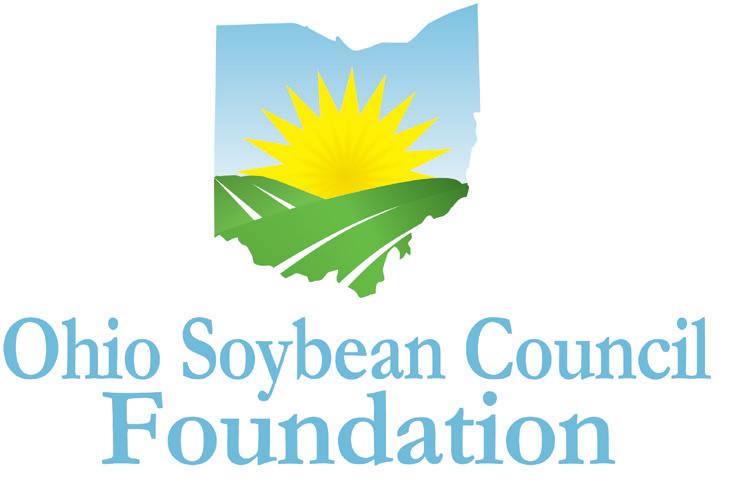
Carren Burkey is pursuing her doctorate in molecular biology and biochemistry at Bowling Green State University. Burkey’s research involves using enzymes to optimize soybean meal for aquaculture feed.
Fabiano Colet is pursuing a masters degree in horticulture and crop science at The Ohio State University. His research focuses on measuring the interaction between seeding rates and planting dates to find the ideal planting situation.
Stephen Riley is pursuing his doctorate in polymer engineering at the University of Akron. His research concerns using pyrolyzed soybean hulls as a filler material for electrically-conductive adhesives in the electronics and electronics packaging industries.
Jomin Thomas is pursuing his doctorate in polymer engineering at the University of Akron. His research concerns molding automotive and aerospace materials using soybean oil and hulls.


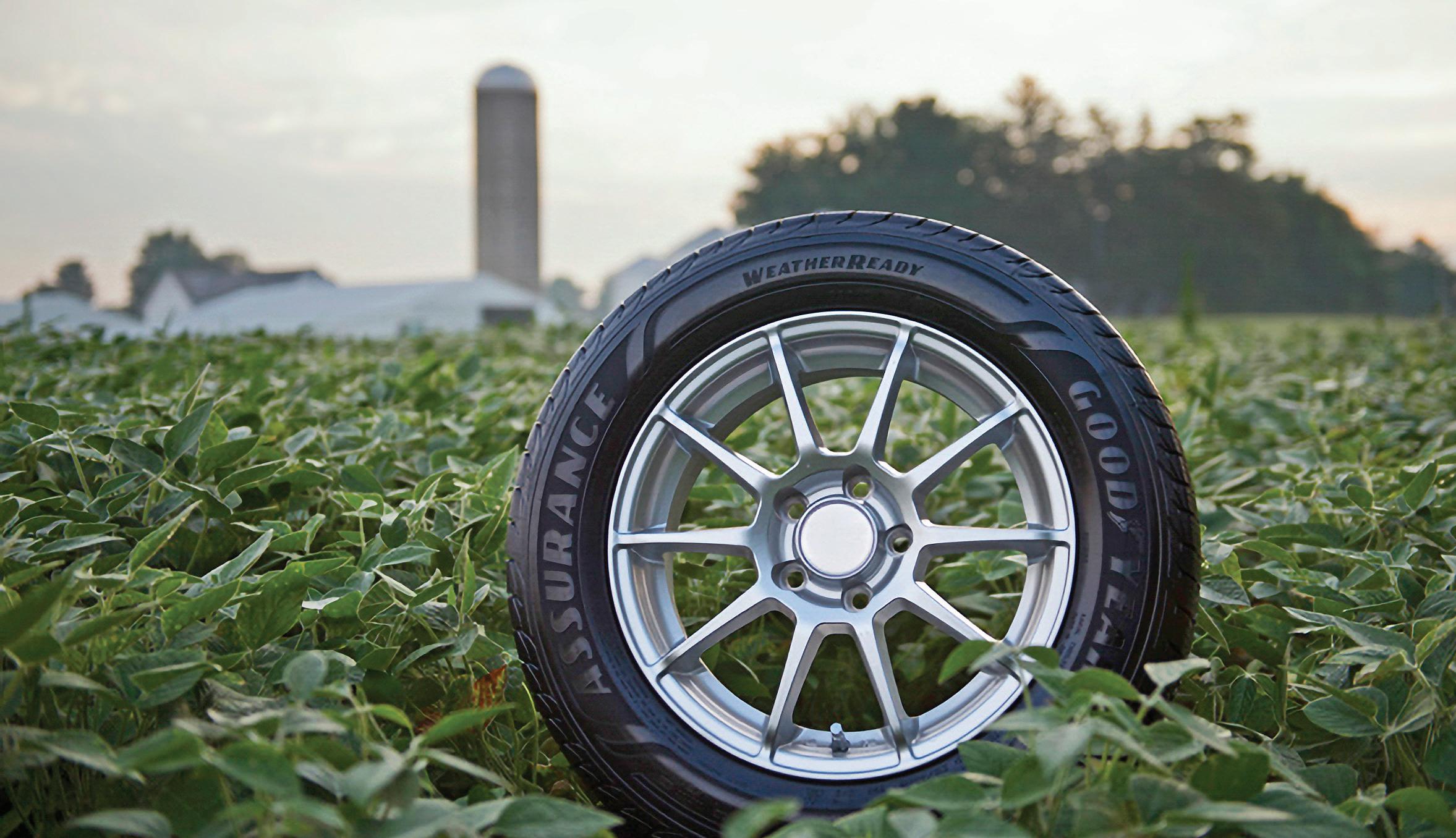
The Goodyear Tire & Rubber Company announced a new sustainable soybean oil procurement policy that reflects its strong commitment to the responsible sourcing of raw materials. The company believes that, through this policy, it can help guide processors, farmers, and all other members of the supply chain to establish practices and make sound environmental and social decisions related to the growing, harvesting, and processing of soybeans.
“Goodyear’s use of soybean oil is growing, and we want our actions to make a difference in the lives of soybean farmers and others in the soybean supply chain,” said Maureen Thune, VP and Chief Procurement Officer. “Our new policy will help guide us as we work with processors, farmers, and others to strengthen the sustainability of the global soybean supply chain.”
Building upon the company’s Business Conduct Manual and Supplier Code of Conduct, the policy features these important components:
Human Rights – Goodyear will work to ensure its soybean oil supply
chain supports and protects the rights of all involved and fosters a positive working environment at all levels of the supply chain.
Responsible Land Acquisition and Use – Goodyear will work to promote an environmentally and socially responsible soybean supply chain, free from deforestation and land grabbing.
Soybean Oil Processing – Goodyear expects its soybean oil suppliers to manufacture their products in a responsible and environmentally friendly manner.
Soybean Growing and Harvesting –Goodyear encourages its suppliers and any sub-suppliers to implement the best-known cultivation and agricultural practices, including, as applicable, those outlined by The Round Table for Responsible Soy.
Supplier Alignment – Goodyear encourages its soybean oil suppliers and sub-suppliers to demonstrate commitment to responsible practices.
Policy Implementation and Compliance – Goodyear is committed to the corruption-free and transparent implementation of the policy.
With checkoff support from the United Soybean Board, Goodyear research discovered that soybean oil could improve tire flexibility at low temperatures, helping the rubber to remain pliable in cold weather and enhancing traction in rain and snow simultaneously.
As part of its commitment to sustainable sourcing, Goodyear is increasing its use of sustainable materials in its products, including soybean oil. Goodyear scientists and engineers — with support from the United Soybean Board — developed a tread compound in which soybean oil replaced some or all petroleumderived oil, discovering that soybean oil helps keep a tire’s rubber compound pliable in changing temperatures, a key performance achievement to maintaining and enhancing vehicle grip on roadways.
Goodyear commercialized this innovation in its Assurance WeatherReady™ consumer tire line in 2017, the Eagle Enforcer All Weather™ in 2018, the Eagle Exhilarate™ in 2019 and the Goodyear Assurance ComfortDrive in 2020.
Goodyear’s 2020 use of soybean oil increased 73% over 2018 usage, making progress toward its longterm goal of full petroleum oil replacement in its products by 2040.
Goodyear’s soybean oil procurement policy is effective immediately and applies to all soybean-based materials sourced by Goodyear operations worldwide. u







Thirty years ago, we began our journey into the last decade of the millennium. High-waisted jeans and animal print were all the rage, rap began gaining a solid footing in the music industry and gas cost just over $1 a gallon. Our country also began its meteoric leap into the modern age of technology.
All the while, the soybean industry was also experiencing changes. Following the creation of the national checkoff in 1990, Ohio farmers rushed to prepare for a state checkoff to individualize programs according to local needs.
While support for a state checkoff started off slow, 30 years later we are looking back on the successes Ohio soybean farmers have seen thanks to the checkoff with three past Ohio Soybean Council (OSC) leaders.
As the Soybean Promotion, Research and Consumer Information Program (SPARC), also known as the national checkoff, began its journey to Congressional approval in the 1990 Farm Bill, work was already underway to create a checkoff in Ohio. As one of the last states to form a state checkoff as a registered Quality State Soybean Board (QSSB), Ohio was pressed for time.
“We’re starting from scratch, so we don’t have anything there,” said Keith Stimpert, who played a key role in OSC’s establishment. Stimpert served as Executive Director of the Ohio Soybean Association, which handles legislative activities on behalf of Ohio soybean farmers, beginning in 1987 and as Executive Director of OSC from 1991 through 1996.
From start to finish, Stimpert and his colleagues garnered support while simultaneously completing the “leg work” behind the process. The vote to approve
a checkoff in Ohio previously failed, so passage in 1991 was a surprise to some.
Reaching out to various farm associations, such as the Ohio Farm Bureau and the Ohio Soybean Association, OSC formed its first board of trustees. From there, board members worked to craft the Council’s bylaws and set its priorities to target in the short term.
Decisions were made regarding, “what’s going on, what to do, who to do it with, how to do it, what to buy, what to promote, where to do advertising,” and more, according to former OSC Chairwoman Amy Sigg Davis, who farms in Warren County.
With a newly formed board of trustees and state checkoff approved through legislation, the real work began: communicating the work of the Council to Ohio farmers.
“It was all very new, so there was a lot of educating that had to go on,” said Sigg Davis.
"It’s [now] an accepted part of what we have here in Ohio,” said former Executive Director John Lumpe on farmers’ perceptions of the soybean checkoff. Lumpe was originally involved with OSC as a member of the public relations firm hired by OSC.
This outlook on the state checkoff came with countless hours of communication and education through press releases, videos, farm shows and more targeted content to inform farmers, said Lumpe.
“We’ve come a long way in helping people understand what [OSC] is about and what it can do for folks in the soybean industry,” he said.
At its beginning, OSC operated out of a small basement studio below Agri Communicators (now known as Ag Net Communications, LLC) in Marion. While this offered ample radio airtime with the well-known Ed Johnson, OSC needed to expand so they moved to an office in Columbus.
An expanded workspace also meant expanded opportunities.
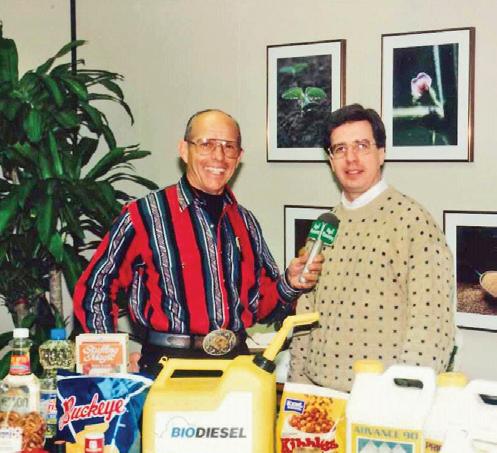
Innovation has always been at the forefront of everyone’s mind. Finding new practical uses for soy and technology to support these innovations has driven OSC for many years.
OSC played a major role in the creation and widespread adoption of biodiesel (formerly known as soy diesel).
Following the passage of the Clean Air Act Amendments in 1990, biodiesel shot into the spotlight, as it is naturally sourced and emits lower levels of greenhouse gases.
Research has found replacing petroleum diesel with biodiesel reduces carbon dioxide emissions by 74%, according to the U.S. Department of Energy’s Office of Energy Efficiency and Renewable Energy.
The Million Mile Demonstration in Cincinnati was a major milestone for biodiesel, according to Sigg Davis. Through a partnership with the city of Cincinnati bus system, biodiesel was used for over a million miles in city buses wrapped in soybean decals.
This marketing strategy, in addition to partnerships with other organizations, demonstrated biodiesel could be used as an equal substitute for petroleum diesel. Biodiesel quickly shifted from being mixed at home to becoming widely available to consumers.
“We took it from getting [biofuel] in a 55-gallon drum to now pulling up at the gas station and filling up,” said Lumpe.
OSC has also made tremendous strides in research. From a partnership with the research and development organization Battelle, to creating their very own Airable Research Lab in 2019, the checkoff has made contributions to soybean research only possible here in Columbus, said Lumpe.
Airable has contributed to the release of innovative soy products, such as

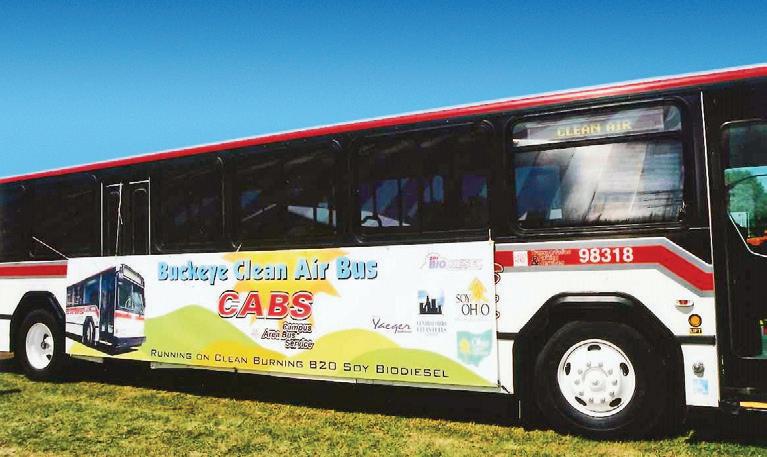
Left to Right: Former Ohio Soybean Executive Director Keith Stimpert (right) speaks with Ed Johnson about biodiesel. Buses on the Ohio State campus ran on B20 biodiesel beginning in 2003.
Former Ohio Soybean Council Chairwoman Amy Sigg Davis was an early proponent of biodiesel.
plasticizers, commonplace in many industrial products, explained Stimpert.
“We were one of the few organizations that started looking into some of these new uses,” said Lumpe.
Through partnership with extension specialists from The Ohio State University, new technology and studies enabled Ohio farmers to expand their operations and grow more product. From an average yield of 36 bushels per acre harvested in 1991 to a record high of 56 bushels per acre harvested in 2020, vast improvements have been made in Ohio soybean production, according to the United States Department of Agriculture National Agricultural Statistics Service.
Through a combination of research, marketing and communication, OSC was also able to advertise food-grade soybeans to consumers. Thirty years ago, soy products in grocery stores were a rare occurrence, explained Sigg Davis.
Finally, seeking global markets was a key part of OSC’s priority list. Soybeans are Ohio’s second largest export, according to the United States Census Bureau. Soybeans, such as the FG1 variety, contributed to a boom in sales to foreign countries seeking soybeans for tofu, said Stimpert.
Driving the market for biodiesel and soy products, discovering new uses and technology, and advocating for placement in new markets were just a few of the priorities the Ohio checkoff supported after its establishment.
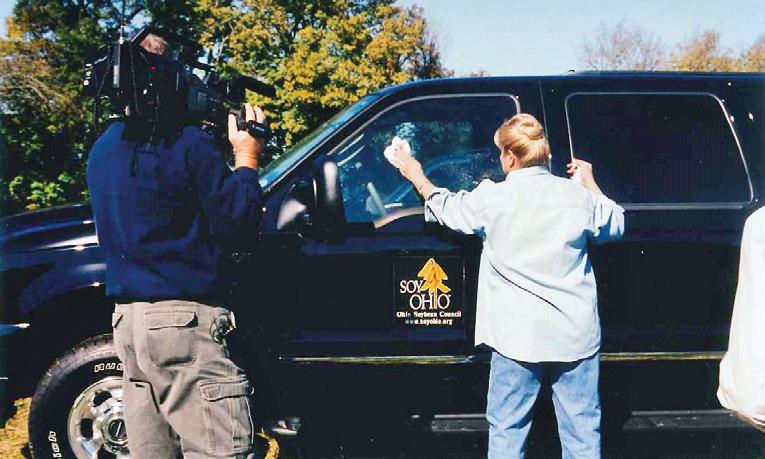
“It was a very multi-faceted program and to my knowledge, still is,” said Sigg Davis.
All these issues remain relevant, yet new priorities always arise in this everchanging industry. Looking to the future, new issues are beginning to emerge.
"The best thing we can use our checkoff dollars for is forward thinking,” said Lumpe.
Forward thinking is exactly what the Council strives to do.
“We know how to grow a good bean, there’s no doubt about that in the United States,” said Lumpe. “What we do need some help [with] is from an infrastructure standpoint.”
Recent events have brought this issue into focus. As U.S. soy increases trade promotion and finds new markets, Lumpe believes the industry needs to improve its ability to transport soy from “farm to overseas” via roads, waterways, rail lines and with improved storage methods.
With an increase in transportation efficiency, Lumpe also believes Ohio soybeans will become more competitive from an international standpoint.
“Our competitors are only getting stronger, and we need to continue shoring up what we have to make us competitive,” said Lumpe.
Furthermore, Stimpert believes soy will play a larger role in the fight against world hunger. Sustainable practices will also be monumental in setting up future generations for success. Organizations such as the Ohio Agriculture Conservation Initiative (OACI) encourage farmers to implement conservation practices that ensure profitability and environmental welfare.
Sigg Davis is a firm believer in garnering consumer and producer support to ensure success. Transparency with the
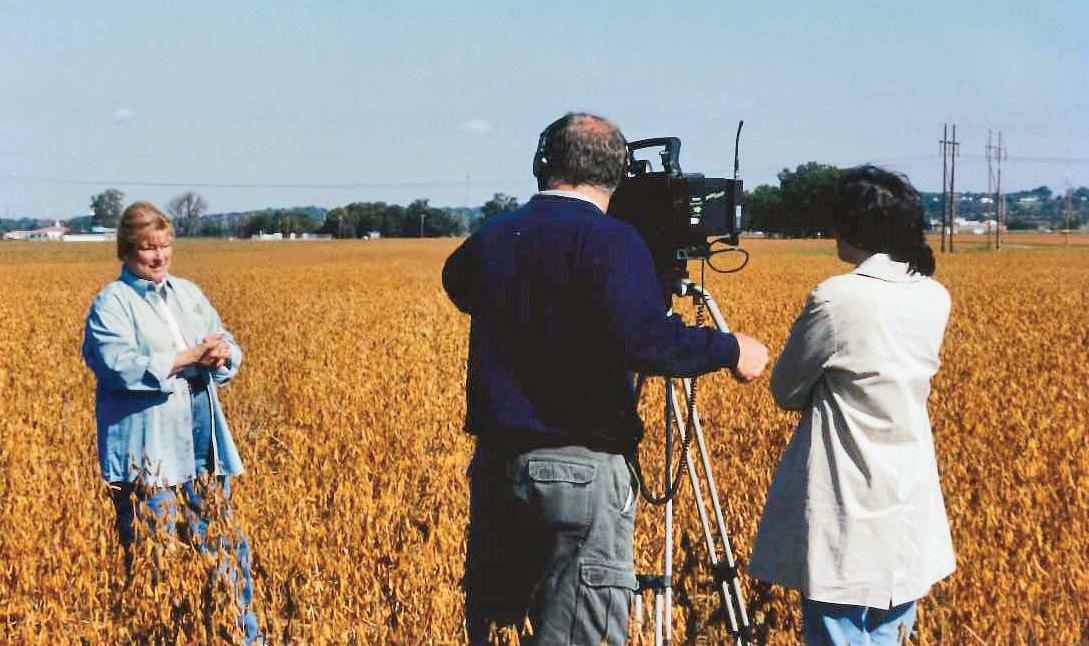
checkoff and constant communication between Ohio soybean farmers and OSC will ensure the checkoff remains a valuable resource. Consumer education and targeted marketing will secure profitability.
“I grow the soybeans. I do not make soy diesel. I use soy flour and all kinds of soy products, but I do not make them. It takes promotion from some entity,” said Sigg Davis.
The checkoff has been at work for 30 years providing support and expanding opportunities for soybean farmers in Ohio. While OSC’s board of trustees is made up of a handful of these farmers, they remain dedicated to efficiently using checkoff dollars in a way that will increase profitability for their fellow farmers.
Every farmer must stay actively involved in the work of the Council, said Stimpert. Reading up on soybean research, joining educational webinars, or even following OSC on social media provides an avenue to stay informed and speak out on relevant soybean concerns.
In addition, support from neighboring checkoff institutions will become more relevant in the near future.
“Each state has its own strengths, and it’s nice to join those strengths up when we can. Ultimately, [we’re] working with a great set of passionate volunteer farmers who want only the best for the farmers that they’re representing,” Lumpe said.
The bottom line: OSC can only be as helpful as the farmers it serves. With the help of new and experienced generations of farmers, the council will be able to adapt and prepare for new challenges to come.
Sigg Davis reminds her fellow farmers: “Remember where you’ve been, where you are, and where you need to go.” u





Happy Birthday, and thanks for your gift to education!
The Ohio soybean check-off program is celebrating its 30th birthday! Thanks to this program, teachers and students across the state have a better understanding of agriculture and the importance of the soybean industry. Check-off funding is intentionally earmarked for educational outreach, with robust results reaching far into the future.
The Ohio Soybean Council was established in 1991, with Keith Stimpert as Executive Director. As part of their vision, they wanted to be engaged in education. Working with a marketing firm, they located local curriculum developers Carol Warkentein and Jeanne Gogolski. The pair were asked to come up with a plan: How can we get soybeans into the minds and hearts of Ohio teachers and students, to help them understand the value of the Ohio soybean industry?
Warkentein and Gogolski interviewed an array of people — commodity leaders, Ohio Farm Bureau members, other people working in agriculture — to educate themselves on soybeans and what was already being done in agriculture education in Ohio. Then they used their own educational backgrounds and connections to come up with 50 pages of ideas.
After presenting these possibilities to the board, they thought their work was done, but Stimpert asked them to work with the Council to implement them. The kick-off project was a partnership with COSI for a Statewide Science Challenge. Every teacher in Ohio received a pound of soybeans, along with “Cool Beans: It’s Soyence”, an educational guide with 15 different ideas on what to do with the soybeans
— everything from germinating seed necklaces to extracting soy lecithin.
From that beginning, educationprojects.org, the company Warkentein and Gogolski established, has worked with Ohio Soybean Council to develop science fair awards, highly-
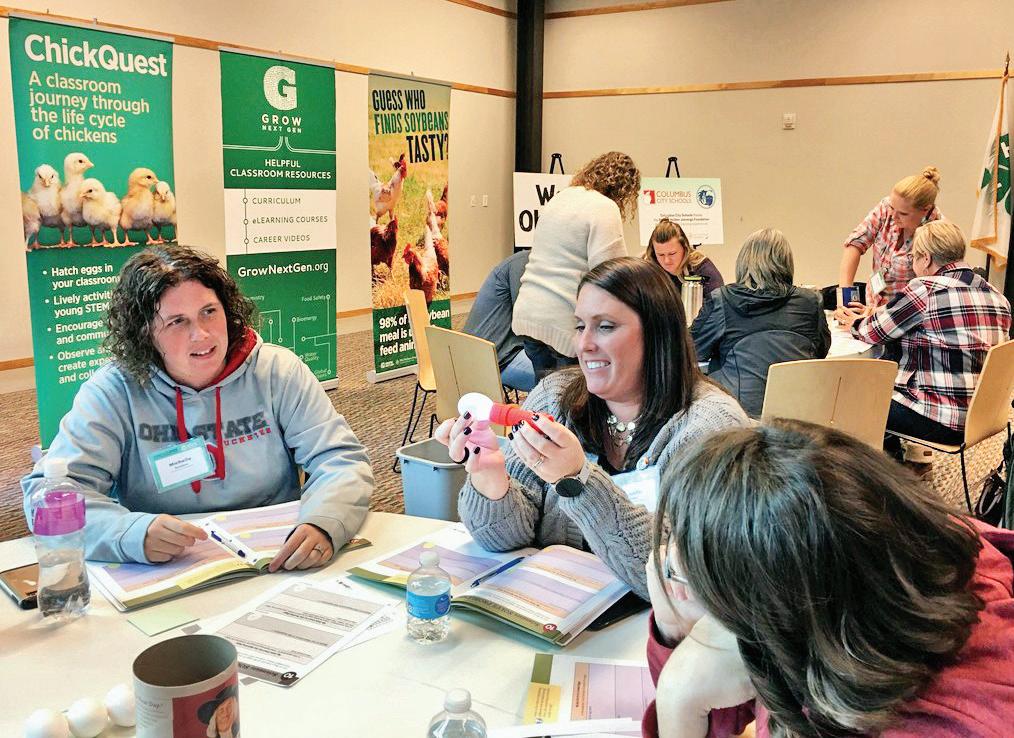

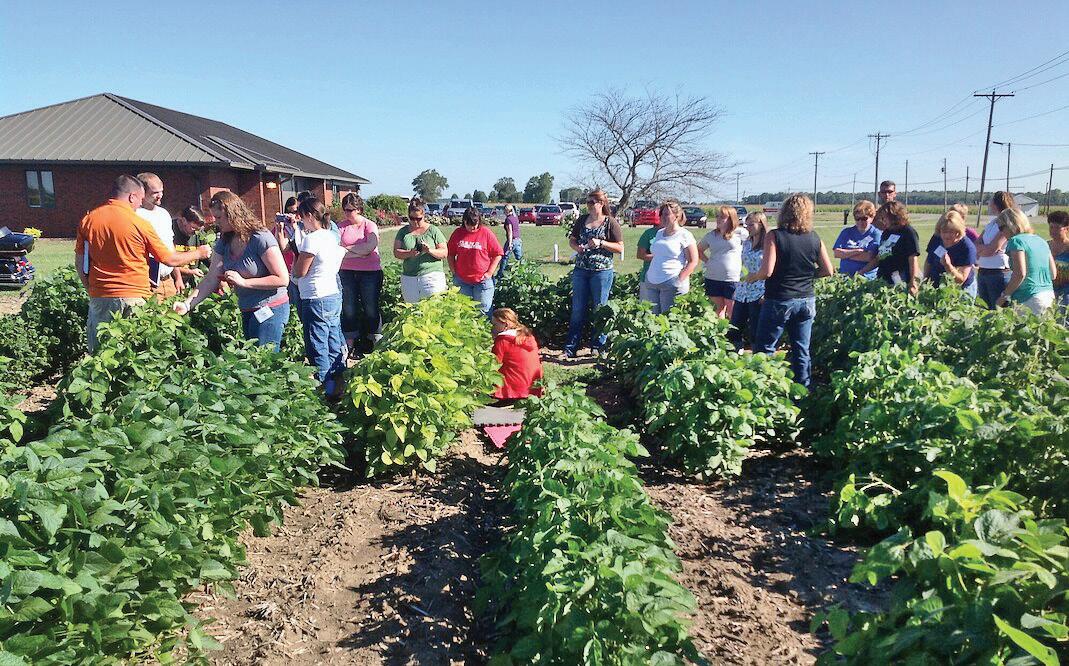
regarded K-12 curriculum (everything from a soybean-related coloring book to high school science labs), as well as partnerships to create programs like the popular ChickQuest.
In 2013, Ohio Soybean Council had extra funds due to record high soybean prices, and they decided to fund some special projects. GrowNextGen was created by a communications agency and educationprojects.org under the direction of Tom Fontana, OSC’s Director of Research and Education. The GrowNextGen.org website houses resources such as curriculum, career information, and e-learning courses, and through the GrowNextGen program, hundreds of teachers have received free professional development
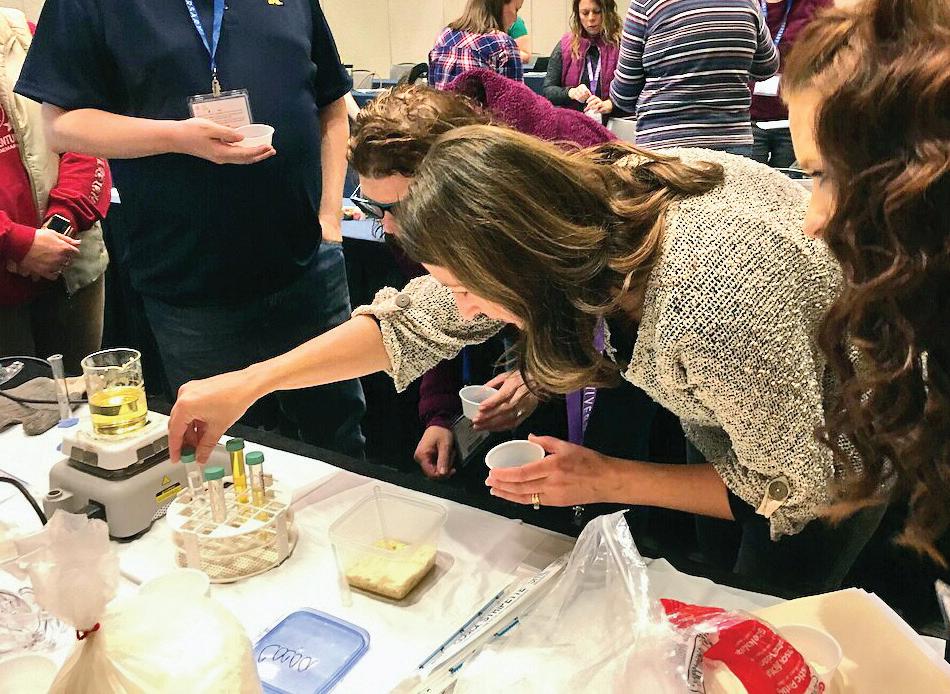
training and supplies for classroom use.
“This has been a joyful thing, to help teachers and students in Ohio to understand food production and the value of the soybean industry,” said Gogolski. “I’m a poster child for the program — I have learned so much about soybeans and this had made me an advocate for agriculture as an educator. That’s what GrowNextGen wants to do for all teachers!”
Thanks to the wise investment of check-off dollars in this program, more teachers and students are learning about modern agriculture and its value in our world. So Happy Birthday to the check-off program, and may its outreach continue to grow and impact the population! u


Biodiesel is a renewable, cleanburning diesel replacement that can be used in existing diesel engines without modification. It is the nation’s first domestically produced, commercially available advanced biofuel. No matter the size of your operation, biodiesel can work for you.
When the largest municipal fleet in the country needs a reliable fuel that is environmentally sustainable, it turns to biodiesel. New York City’s current fleet policy calls for B20 (a blend of 20 percent biodiesel with 80 percent diesel) in non-emergency vehicles for most of the year, with a B5 (five percent biodiesel with 95 percent diesel) standard in winter. The standard allows emergency departments to use straight petroleum diesel, but some are voluntarily adopting biodiesel, such as the Police Department, which has opted for B10.
Biodiesel adoption started in 2005, when the Parks and Recreation Department began pilot-testing fuel blends in some of its vehicles. Usage surged a few years later when the Sanitation Department, the municipality’s largest consumer of diesel, piloted and then adopted B5.
There is no need to change out vehicles or fueling infrastructure. More than 150 types of vehicles and equipment use biodiesel blends in the New York City fleet, including garbage trucks, mowers, beach-cleaning equipment, tractors, light towers, and generators. Even with application in 11,000 vehicles, the City has experienced virtually no fuel related problems, according to Keith Kerman, Deputy Commissioner, Department of Citywide Administrative Services (DCAS).
Biodiesel has also helped local fleets reduce their carbon footprint without losing performance. In 2019, the Franklin County Engineer’s Office made the switch to B20 for the majority of the year. The Engineer joined the Municipal Equipment Maintenance Association, which helped introduce them to Clean Fuels Ohio and the Midwest Green Transportation Forum and Expo. The Engineer and Clean Fuels Ohio continue to work together to ensure the success of their B20 deployment.
County Engineer, Cornell Robertson, emphasized how important it is to consider the environment and explore ways to protect it. “We realize how important it is to be green. It’s not easy,” he said with a smile, making a reference to Kermit the Frog. “But it can be done.” According to Franklin County Fleet Manager Jeff Markusic, the Engineer’s Office had to make zero technical changes to their fleet in order to start using B20 blend biodiesel. This easy switch is one of the reasons they were drawn to biodiesel in the first place.
“Biodiesel was the lowest hanging fruit. We cleaned out all of our tanks, educated our mechanics on it, spoke with industry personnel and then we started with B20,” Markusic explained. “We didn’t have to change our fleet so we could do it without a big investment.”
He said their office did hear some negative stories surrounding biodiesel but decided to make the switch anyway after getting the facts. “We have had no identifiable issues related to B20 at all,” he said. “We have plans to go to B20 year-round hopefully.”
At 1,300 acres, Steve Reinhard’s Crawford County farm is hardly small, but he does run biodiesel in a much smaller fleet of vehicles and equipment.
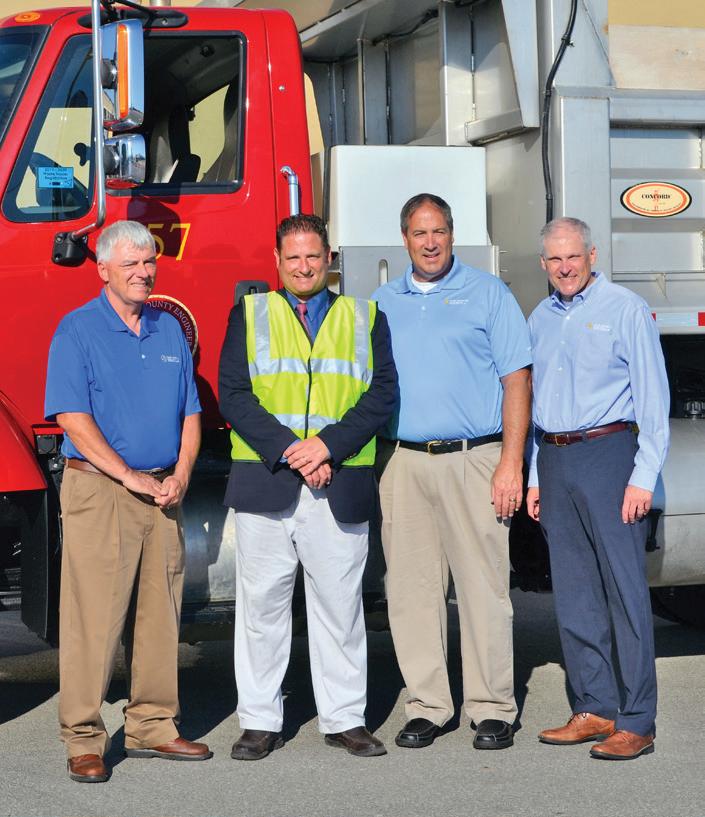
From left to right, Van Wert County farmer Mike Heffelfinger, Franklin County Engineer Cornell Robertson, Crawford County farmer Steve Reinhard and Ohio Soybean Council Executive Director Kirk Merritt at the 34th Annual Snow Fighter ROADEO.
“We decided to use biodiesel on our farm, basically because it’s a product that’s renewable. It’s something that we raise here beginning with the soybean itself,” Reinhard said.
He explained that in the 10 years they have used biodiesel on their farm, they have been able to reduce the amount of smoke that comes from the equipment, especially under a heavy load.
ce
No matter the size of your fleet, a biodiesel blend will likely provide your operation with a diesel alternative solution. Your vehicles need little to no adapting to run on a biodiesel blend, it is affordable, and made from renewable, clean-burning biomaterial that is better for the environment and air. Learn more about adopting biodiesel today by contacting the Ohio Soybean Council or Clean Fuels Ohio. u






Weed control is one of the major challenges that soybean farmers face every year. Crop yields can be reduced by as much as 80% when weeds are left uncontrolled. In the Midwest, weed pressure can account for up to 39% yield loss in soybeans. On average, weed pressure impacts soybean yield more than pressure from insects, animals, and diseases combined.
Alyssa Essman is a Weed Science Research Associate at The Ohio State University and has conducted research looking at the interaction between cover crops and weed control. She studied the impact of “planting green”, or terminating cover crops after planting soybeans, and the effect on weed control and soybean yield.
When evaluating weed control programs in Ohio, producers often think about the “Big 5” weeds that are most troublesome. Common ragweed, giant ragweed, horseweed (marestail), waterhemp, and palmer amaranth have all shown herbicide resistance and become a nuisance to farmers. “Common ragweed is more problematic in Northwest Ohio, where it has some different resistance issues than in the rest of the state. Giant ragweed has a lot of biological advantages, in terms of seed size, plant size, and especially growth rate,” said Essman. “It is very competitive and can be a real problem year after year. Horseweed (marestail) also has a number of characteristics that give it an advantage, and it can be particularly hard to deal with. It can germinate almost any time of the year, and it spreads very easily.”
There are also some “newer” weeds to Ohio that have been gaining attention. Waterhemp and Palmer amaranth are two weeds that farmers need to be able to identify and will want to keep out of their fields to prevent an outbreak from starting. These two weeds produce a large number of seed and can infest fields in a short amount of time. “Waterhemp is starting to be an issue, especially on the west side of the state,” said Essman. “Palmer amaranth seems to be more localized where there have been introductions and so far, growers have done a good job eradicating it where it’s been found.”
In soybean production, farmers have primarily tried to use herbicide tolerant varieties of beans to control problematic weeds. “Soybeans have been one of the most rapidly adopted herbicide tolerant crops,” said Essman. “This is largely because weed control was more difficult in soybeans, and there were fewer options in soybeans for a post herbicide. These systems really simplified weed control in soybean production.”
“Herbicide resistance is a result of selection pressure and became an issue due to the repeated use of the same herbicide sites-of-action, multiple times a year, over several years,” said Essman. “This means over time we have selected for weeds that have a higher natural tolerance to these herbicides. The small number of weeds remaining in the field each year led to populations with increased levels of tolerance. The percent of the population with higher tolerance grows over time until that herbicide is no longer effective at controlling that weed population.”
A lack of crop rotation compounds the resistance issue because it narrows the number of herbicide options available. Generally, there are a limited number of herbicide sites-of-action (SOA) available to growers.
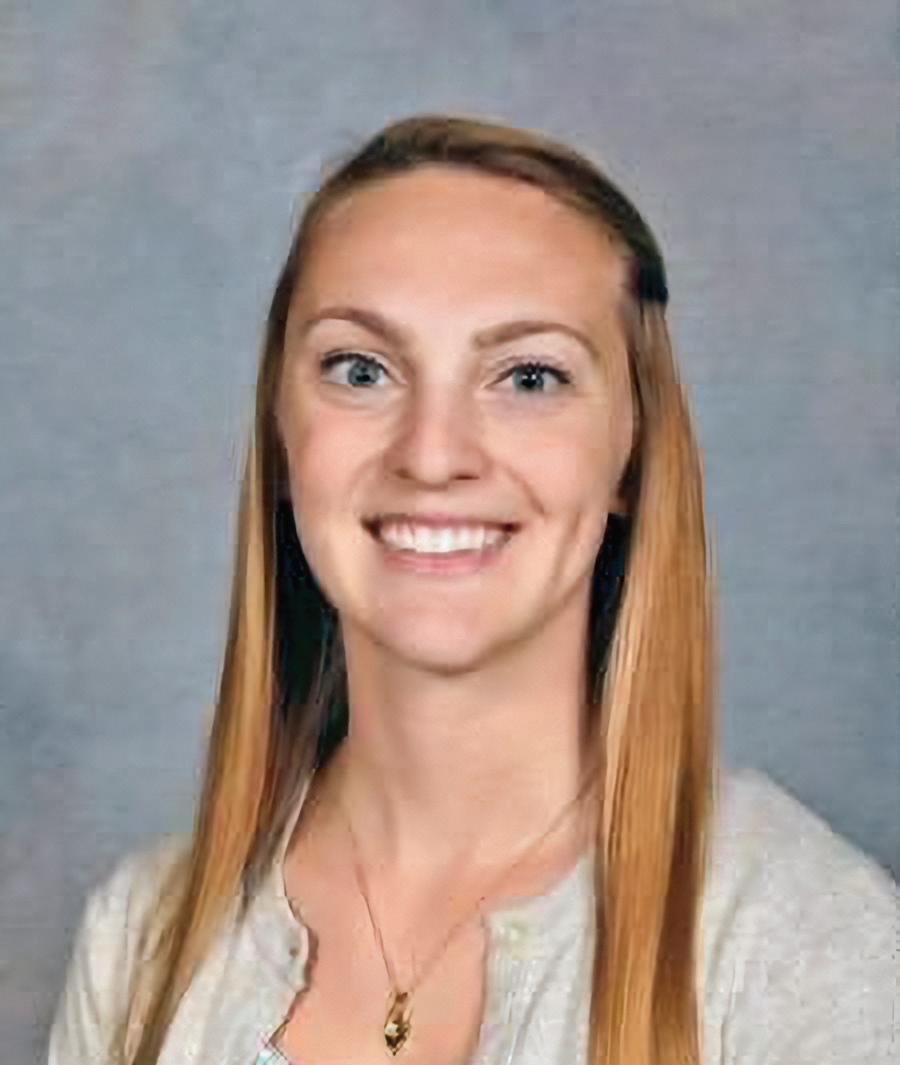
The number of weeds developing resistance to more than one site-of-action is now a growing problem. “It is not that uncommon to find weeds with resistance to two sites-of-action” said Essman. “There has been a waterhemp population identified in Missouri that has exhibited 6-way resistance.”
The question is shifting from how farmers should deal with weeds, to how they should deal with herbicide resistance. “In the past our response has been reactive as opposed to proactive,” said Essman. “We need to consider how to combat the current situation and also find ways to slow down or prevent future instances of herbicide resistance.”
One of the best approaches to combat herbicide resistance in weeds, is to implement an integrated pest management (IPM) strategy. The concept behind IMP is to use multiple methods to attack the problem as opposed to just one single method. Biological controls, cultural controls, mechanical controls, and chemical controls all have a part in
this strategy. “Research performed at universities and on farms has found that cover crops can also be one of the many control tactics needed to fight herbicide resistance issues,” said Essman.
Cover crops provide many benefits, including reducing erosion, building organic matter, decreasing nutrient loss, improving water infiltration, increasing soil biodiversity, and creating a habitat for beneficial insects and fungi. They also have been found to effectively suppress weeds.
When actively growing, cover crops compete with weeds for light, nutrients, and water. Terminated cover crop residue physically suppresses weeds by creating a barrier and blocking light from reaching the soil surface. Biomass and ground cover are the two main drivers of weed suppression by cover crops. The more biomass is produced, the more effectively it smothers weeds. High levels of ground cover also shade out or blocks the sunlight and slows germination and growth of weeds.
In the United States, cover crop adoption has increased from 10.2 million acres in 2012 to 15.4 million acres in 2017. In Ohio, a survey was conducted form 2016–2018, and the number of acres planted with cover crops increased each year.
The objectives of the research conducted by Essman at The Ohio State
University were to determine the effects of the rye seeding rate, rye termination timing, and herbicide systems on weed density in soybeans. “The hypothesis was that high seeding rates of rye combined with delayed rye termination could supplement or replace weed suppression that is typically provided by spring-applied residual pre-emergence herbicides,” said Essman.
In the two-year study, conducted from 2018–2020, three seeding rates of 0, 45, and 90 pounds of rye per acre were used. There were three termination periods which were: 7 days before planting (DBP), 7 days after planting (DAP), and 21 DAP. The spring residual component was either a control with nothing applied, or the use of Valor XLT. Each combination of factors was evaluated. The data measurements included the cover crop biomass at each termination timing, weed population density, as well as the soybean density and soybean yield.
“Results showed that rye seeding rate was one of the least important factors. The presence of rye reduced the density of giant ragweed in the trial; however, there was no difference between the 45 and 90 lb./A seeding rates on the density of giant ragweed at the time of the post-application,” said Essman. “This was consistent with other studies. Cover crop seeding rates seem to be one of the least influential factors in terms of weed suppression, especially for rye. This may be due in part to the tillering of the rye which will compensate for less biomass with increased ground cover.”

45- and 90-pound seeding rates both had acceptable control, but were not different from each other.
“Rye terminated 21 DAP generally coincided with lowest weed density each year,” said Essman, “This was not always significantly different however from the rye terminated 7 DAP.”
“At higher weed densities we saw a greater benefit from cover crops with later termination than in lower weed densities,” said Essman. “Termination timing had the greatest effect on weed density, likely as a result of the effect on cover crop biomass.”
In the study, giant ragweed density was not affected by the pre-emerge herbicide either year. The density of giant foxtail was lower with a residual herbicide each year.
“Cereal rye used as a cover crop can reduce weed density in soybeans,” said Essman. “Making adjustments to the rye termination timing had more of an effect than adjustments to the rye seeding rate.” However, this research also found that spring-applied residual herbicides are still needed to provide adequate weed control into the growing season.
“In a visual weed pressure assessment, a 0-100% scale is often used, with 85% visual control considered acceptable,” said Essman. “In 2020, based on seeding rate, the treatments without rye did not have acceptable control, whereas the
In order to evaluate whether or not the increased biomass could replace a late season herbicide application, treatments where rye was terminated 21 DAP did not receive a second post application. The first year of the study saw an increase in yields where rye was terminated 7 or 21 DAP. However, there was a slight reduction in yield where rye was terminated 21 DAP in the second year of the study, where there was giant ragweed present late season. A post application may be needed for hard to control weeds such as giant ragweed. “In this study, rye was terminated 7 days after soybean planting without reductions in the soybean yield” said Essman.
A third year of this study is being conducted. Future research will evaluate termination timing on other problem weeds and will also evaluate the effects on weed size at the time of the postapplication. u










“THE CHECKOFF HAS BEEN A HELP TO US. IT'S OPENED FOREIGN MARKETS AND FUNDED RESEARCH ON DISEASES AND FUNGI. THE RESEARCH AND DEVELOPMENT HAS JUST BEEN VERY POSITIVE.”
-JAN LAYMAN, KENTON, OHIO












BY INVESTING IN THE SOYBEAN CHECKOFF, FARMERS ENSURE END-USER DEMANDS ARE MET WHILE RAISING SOYBEANS PROFITABLY. USING INFORMATION FROM THE OHIO SOYBEAN COUNCIL, FARMERS TRACK RESEARCH ON NEW VARIETIES, NEW USES AND NEW FOREIGN MARKETS TO GROW NEW OPPORTUNITIES.
LEARN MORE AT SOYOHIO.ORG/HEREWEGROW.
BROUGHT TO YOU BY OHIO SOYBEAN FARMERS AND THEIR CHECKOFF.